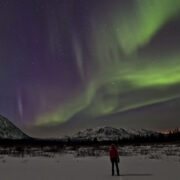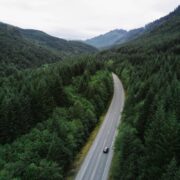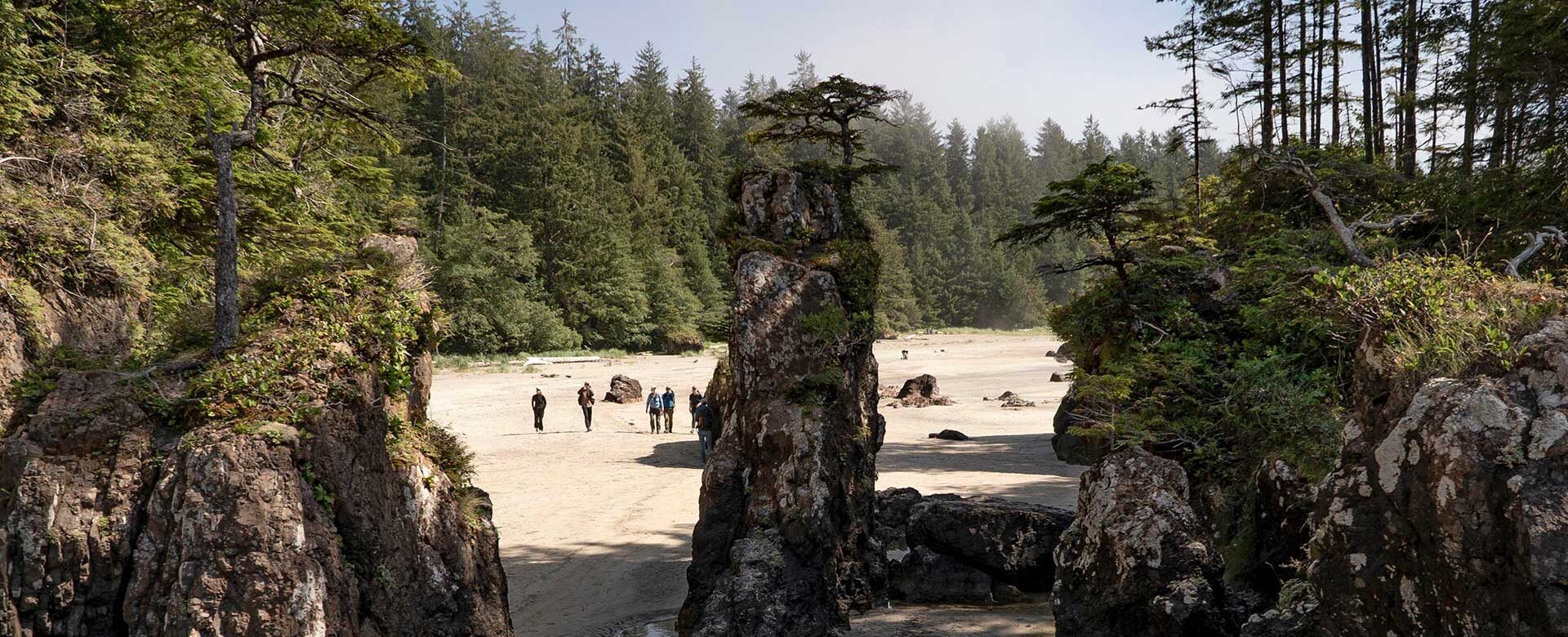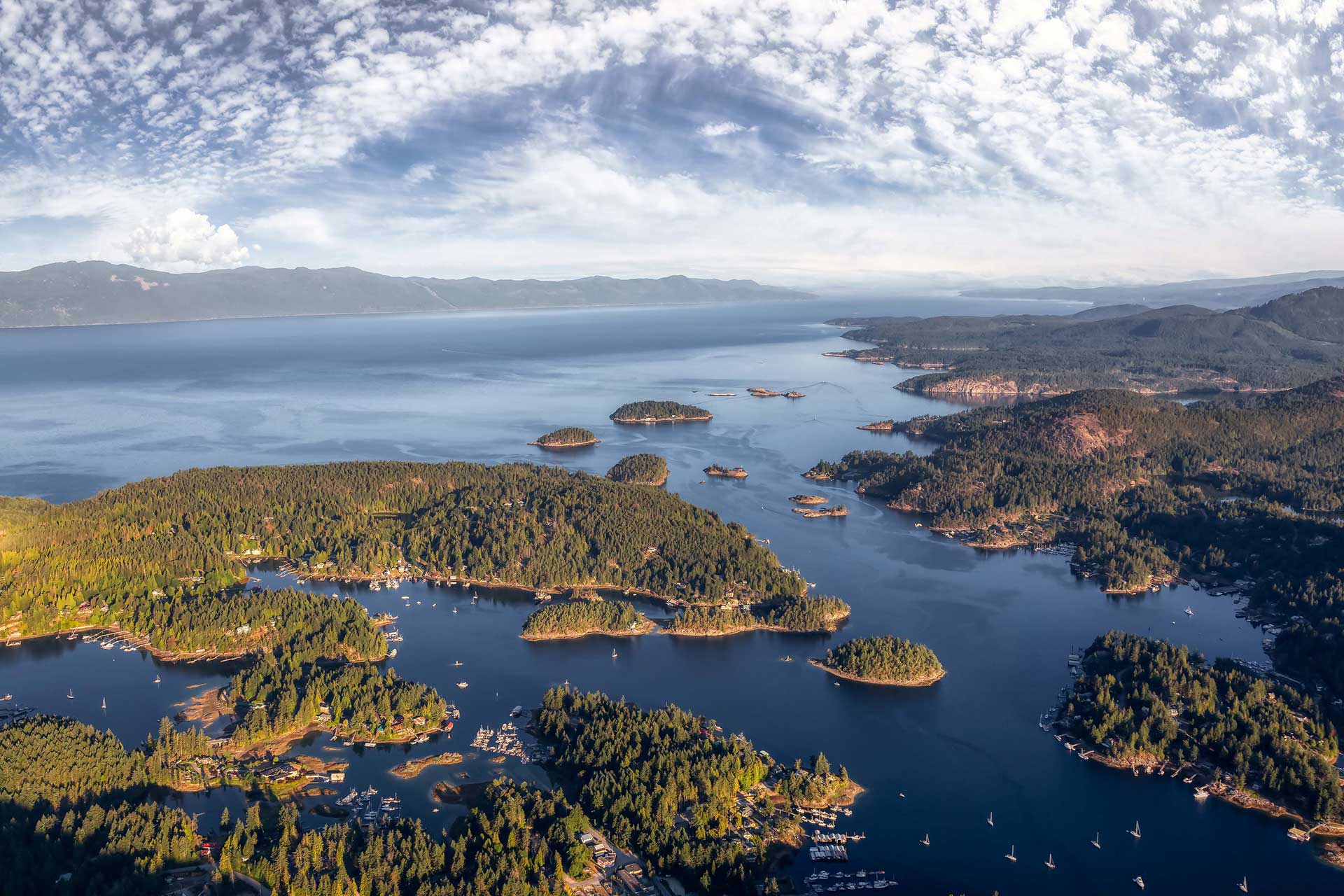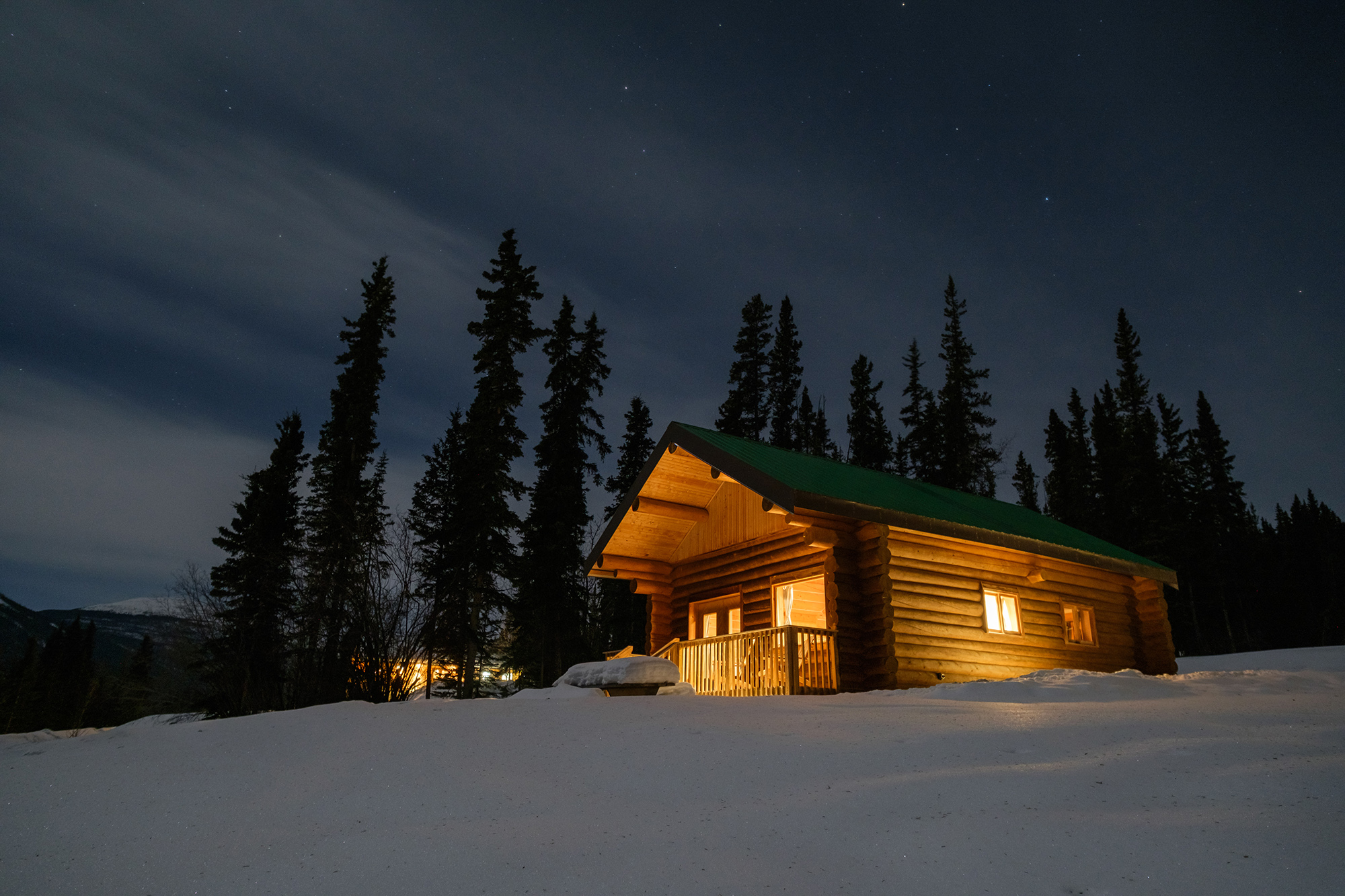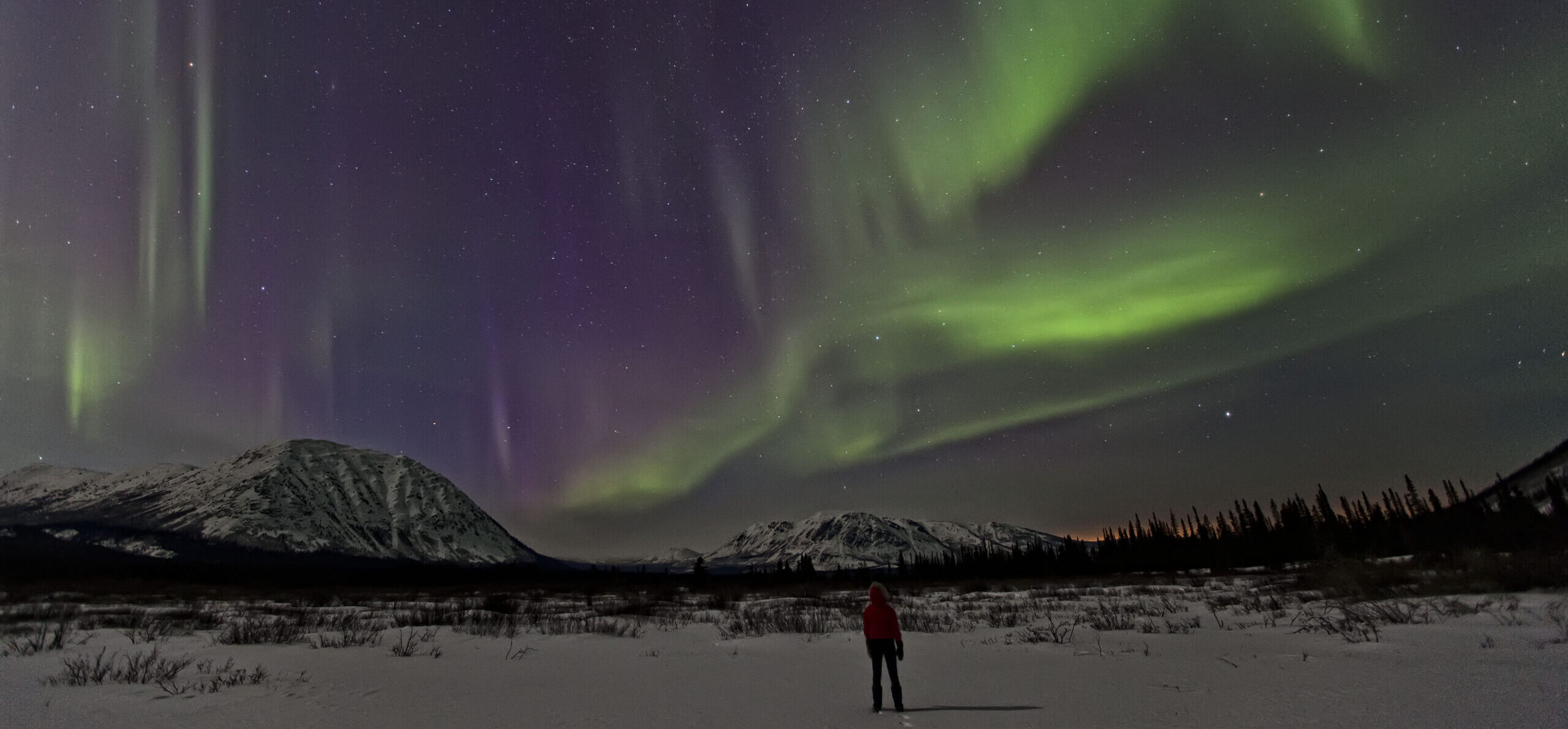
Chasing the Light: Your Guide to the 2025 Solar Maximum in the Yukon
Date:
Author:
As we approach the height of solar activity in 2024 and 2025, the world is poised to witness one of nature’s most awe-inspiring phenomena: the Northern Lights, or Aurora Borealis, in its full glory. You may have already observed the spectacular dance of light this past year as the aurora activity has been increasing, making it visible across southern Canada and even into the United States.
Over the next year, this celestial event promises to be more vibrant and frequent than it has been in over a decade, offering a unique opportunity for travellers and stargazers alike. Let’s explore the science behind the Northern Lights, its cultural significance, and why the Yukon should be at the top of your travel list for this extraordinary event.
What Are the Northern Lights?
The Northern Lights, scientifically known as Aurora Borealis, are a natural light display predominantly seen in the high-latitude regions around the Arctic and Antarctic. These ethereal curtains of light paint the night sky with hues of green, pink, red, and sometimes even blue or purple, creating a mesmerizing spectacle that has captivated humans for millennia.
The term “Aurora Borealis” comes from the Roman goddess of dawn, Aurora, and the Greek name for the north wind, Boreas. While “Northern Lights” refers to the phenomenon in the northern hemisphere, its southern counterpart is called “Aurora Australis” or the Southern Lights.
The Science Behind The Lights
The auroras are caused by the complex interaction between solar winds and the Earth’s magnetic field. The sun constantly emits a stream of charged particles into space, known as the solar wind. Earth’s magnetic field forms an invisible shield that redirects the solar wind around our planet. As Earth’s magnetic field protects us from the solar wind, the magnetic field lines are dragged and stretched. They snap back like an elastic band, launching charged particles down towards Earth’s surface along the magnetic field lines. When these charged particles collide with gasses in Earth’s upper atmosphere, energy is transferred and released in the form of light – creating the aurora.
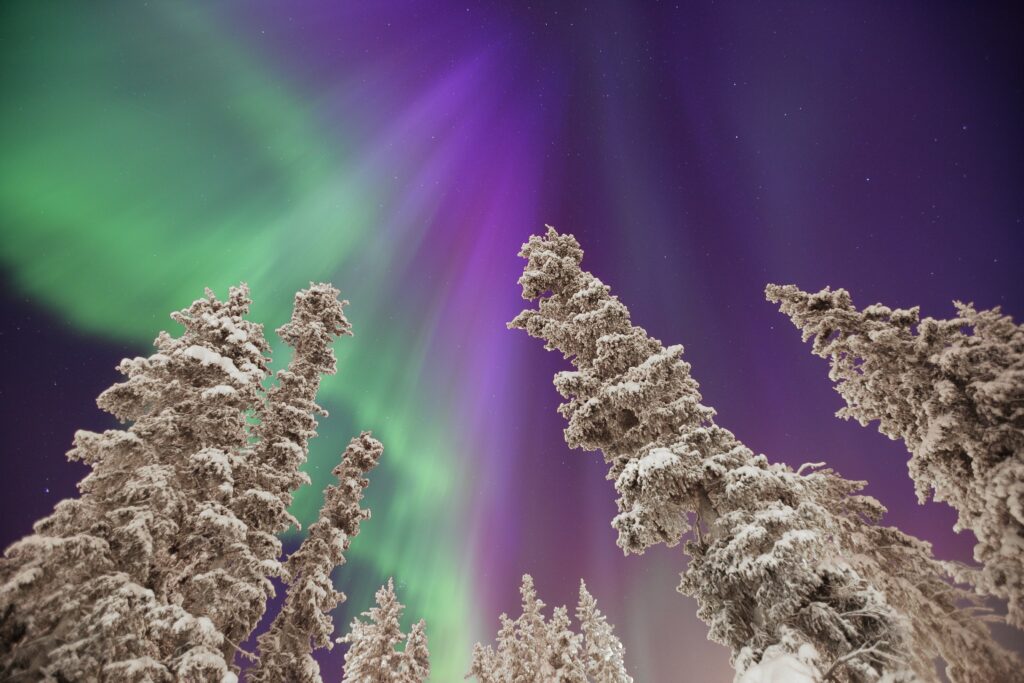
The colours of the aurora are determined by the type of molecules with which solar wind particles collide as they enter the earth’s atmosphere. Solar wind particles and oxygen molecules produce green and yellow light, while nitrogen molecules produce red, violet and blue light.
Cultural Significance: Northern Lights and Indigenous Peoples
The science behind the Northern Lights is just one part of the story. This ‘otherworldly’ phenomena has captivated imaginations and been woven into legend and folklore for thousands of years, particularly in northern regions where the lights are most widely seen.
Many different Indigenous groups live in Canada’s North, and each nation has its own beliefs and legends to explain the Northern Lights. For many, this phenomenon is more than just a beautiful display – it is a connection to the spirit world. Some of the stories and legends include:
- Spirits of the Deceased: Many First Nations believe the lights represent the spirits of their ancestors. The dancing lights are seen as these spirits playing games, celebrating, or trying to communicate with the living.
- Guiding Lights: Some traditions hold that the aurora helps guide the spirits of the recently deceased to the afterlife.
- Protective Spirits: In some stories, the lights are seen as protective spirits watching over the people, animals, and land.
- Predictive Powers: Some First Nations people believe that the patterns and colours of the aurora can predict future events or weather patterns.
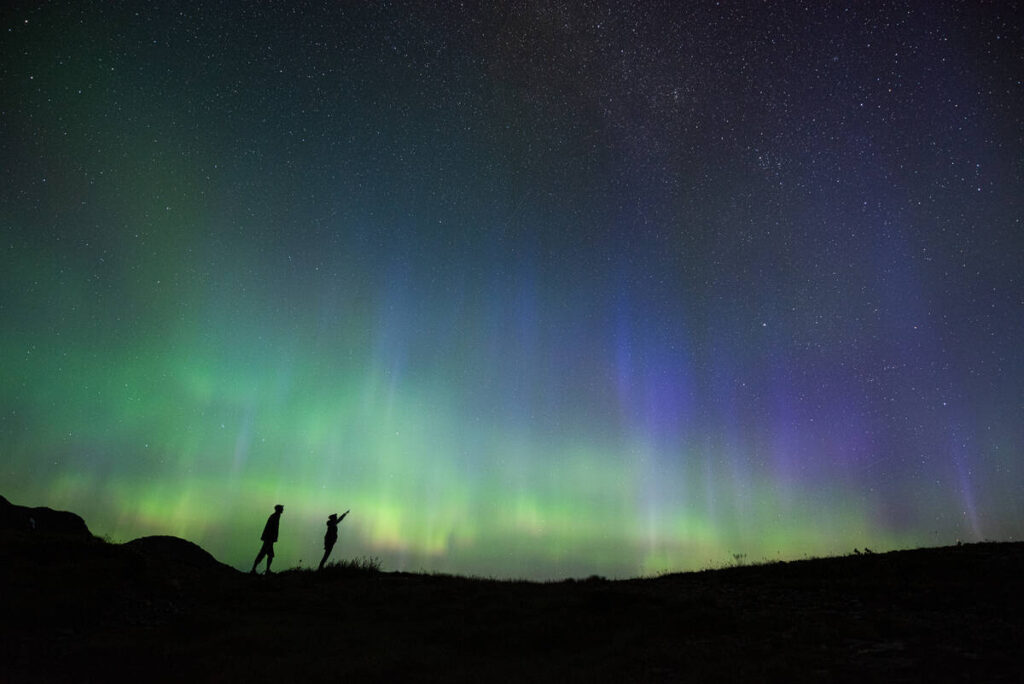
Given the spiritual significance of the Northern Lights, many First Nations communities approach the phenomenon with great respect. There are often customs and protocols associated with viewing the aurora:
- Some traditions advise against whistling at or mocking the lights, as this might offend the spirits.
- In certain communities, it’s believed that the lights can be called down by quietly clicking one’s tongue.
- Some elders teach that it’s important to remain quiet and respectful when the lights are active, to honour the spirits present.
Bridging Traditional Knowledge and Modern Science
In recent years, there has been a growing recognition of the value of traditional Indigenous knowledge in understanding natural phenomena, including the aurora. Many scientists and educators are now working alongside First Nations communities to integrate traditional knowledge with modern scientific understanding.
This collaborative approach not only enriches our overall understanding of the Northern Lights but also helps preserve and honour the cultural heritage of the First Nations. It provides a more holistic view of the aurora, one that encompasses both the scientific mechanisms and the profound cultural significance of this celestial wonder.
Solar Maximum: The Peak of Aurora Activity
Whether it’s the science, spirituality, or simply the beauty of the Northern Lights that draws you in, this current solar maximum is great news for all observers.
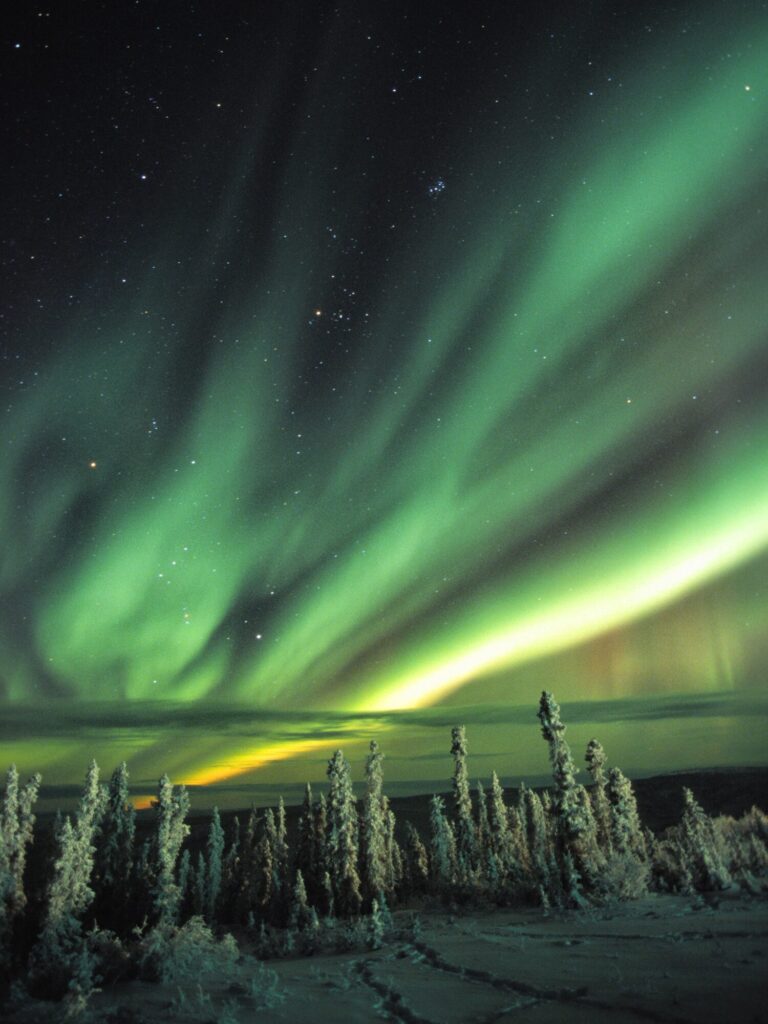
The sun, like many natural phenomena, operates on cycles. The solar cycle, which lasts approximately 11 years, is characterized by periods of high and low solar activity. The peak of this cycle is known as the solar maximum, where the sun’s magnetic field is at its most intense. This creates a greater number of sunspots on the sun’s surface – areas of intense magnetic activity – that can produce solar flares and coronal mass ejections (CMEs) – massive bursts of solar wind and magnetic fields released into space.
These events significantly increase the number and energy of charged particles hitting Earth’s atmosphere, resulting in more frequent and intense auroral displays. Conversely, during a solar minimum, auroral activity is generally less frequent and less intense.
The 2024/2025 Solar Maximum
We are currently in Solar Cycle 25, which began in December 2019, and scientists predict the solar maximum will occur between mid-2024 and mid-2025. What makes this particular maximum exciting is that it’s expected to be stronger than initially predicted. Recent observations and models suggest that Solar Cycle 25 could be one of the strongest on record, potentially rivalling the intensity of cycles from the mid-20th century. This means we can anticipate:
- More frequent auroral displays
- Aurora visibility at lower latitudes than usual
- More intense and vibrant colours in the night sky
- Potential for rare daytime aurora sightings in very high latitude regions
This heightened activity provides a unique opportunity for aurora chasers and casual observers alike to witness this natural wonder in its most spectacular form.
When & Where to See the Northern Lights
Canada is home to most of the world’s best aurora-viewing locations. Between 80-90% of the accessible land inside the auroral oval – the ring-shaped region around the Earth’s magnetic pole where aurora activity is most concentrated – is in Canada.
As we approach this extraordinary period of heightened auroral activity, we believe there’s no better place to experience the Northern Lights than in the Yukon Territory.
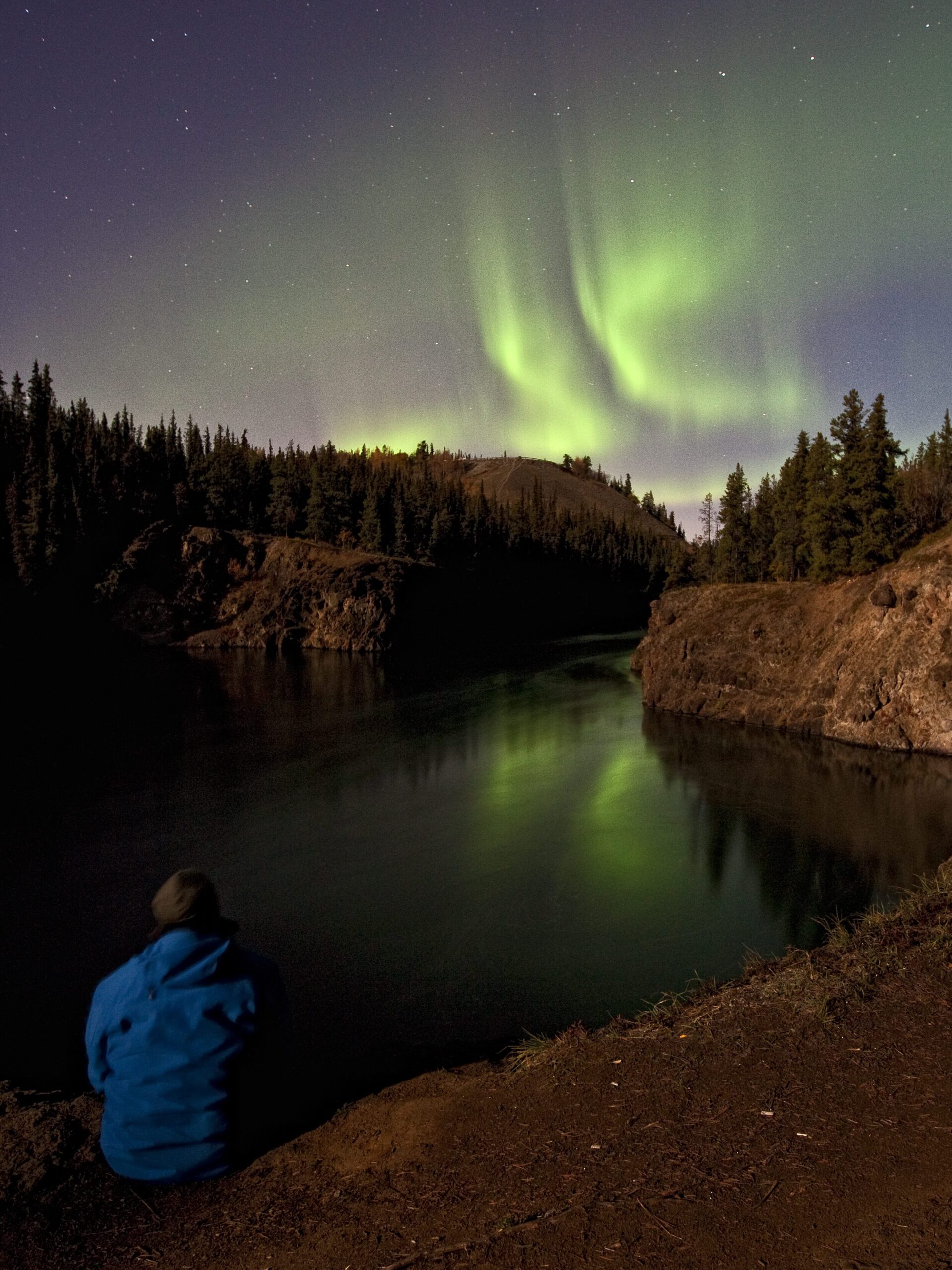
Here are a few reasons why:
1. Prime Geographic Location
The Yukon’s location in northwestern Canada places it directly under the auroral oval, meaning that on clear nights during the solar maximum, your chances of seeing the Northern Lights are exceptionally high.
2. Dark, Clear Skies
The Yukon’s long winter nights provide extended viewing opportunities. Moreover, the territory’s low population density means minimal light pollution, offering pristine dark skies that are perfect for aurora viewing and astrophotography.
3. Comfortable Viewing Options
Gone are the days when viewing the aurora meant braving the cold all night. The Yukon offers a range of comfortable viewing options where you can cozy up in a heated cabin sipping hot chocolate, gather around the campfire and roast marshmallows, or even view the lights from the warmth of your bed in a private villa with floor-to-ceiling windows.
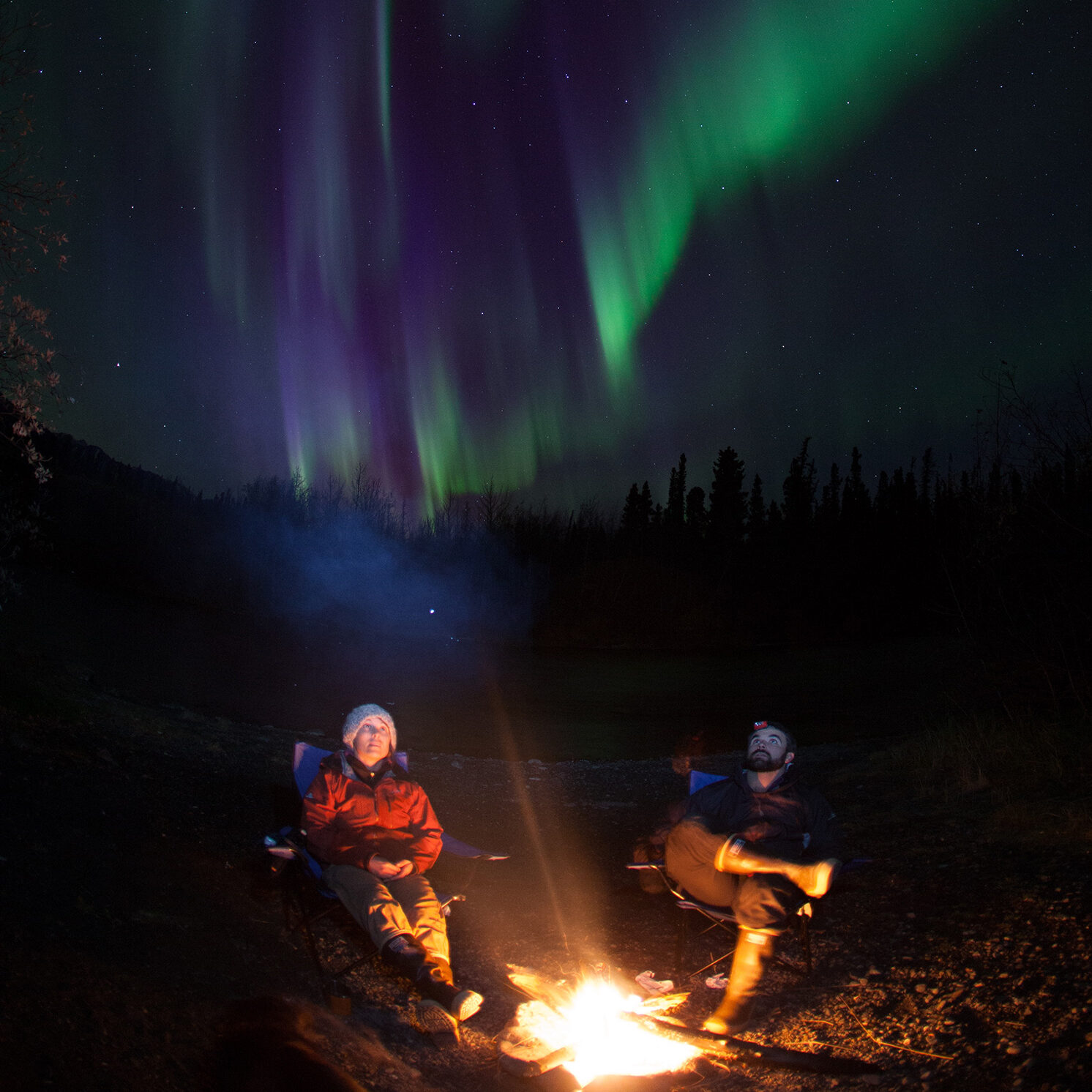
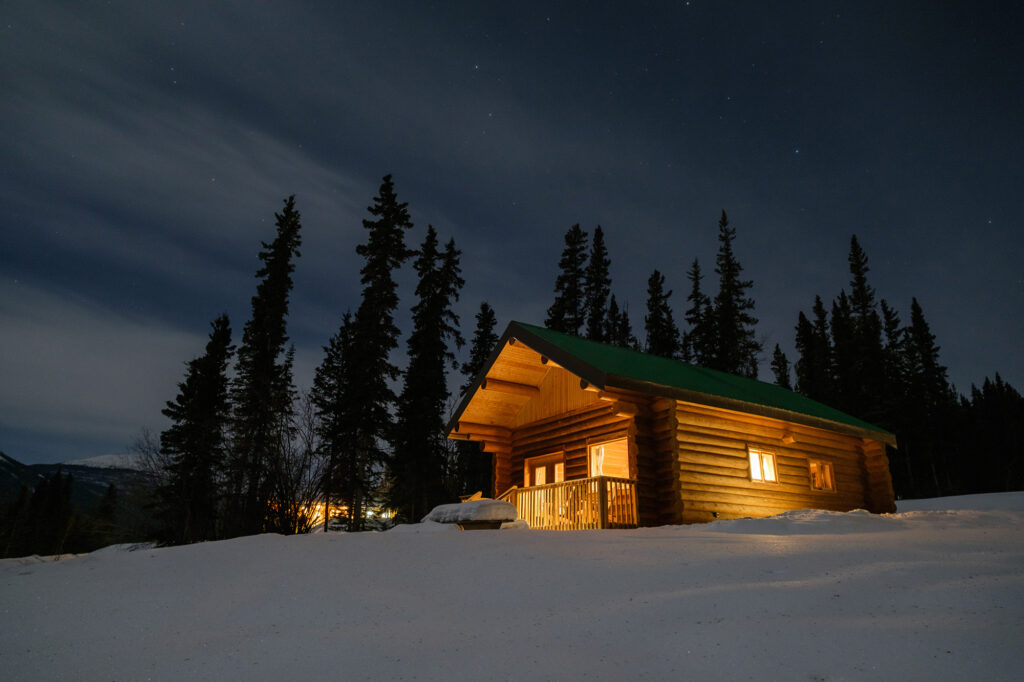
4. Unique Cultural Experience
By visiting the Yukon, you’re not just witnessing a natural phenomenon – you’re immersing yourself in a land rich with cultural heritage. Many local tour operators, including those we work with at Mosaic Earth Travel, offer experiences led by First Nations guides who can share their traditional knowledge and stories about the aurora.
5. Winter Wonderland Activities
While the Northern Lights are a nighttime spectacle, the Yukon offers plenty of daytime winter activities to make your trip unforgettable. From dog sledding and ice fishing to snowshoeing and skiing, and even a Nordic Spa, there’s no shortage of ways to embrace the winter wonderland.
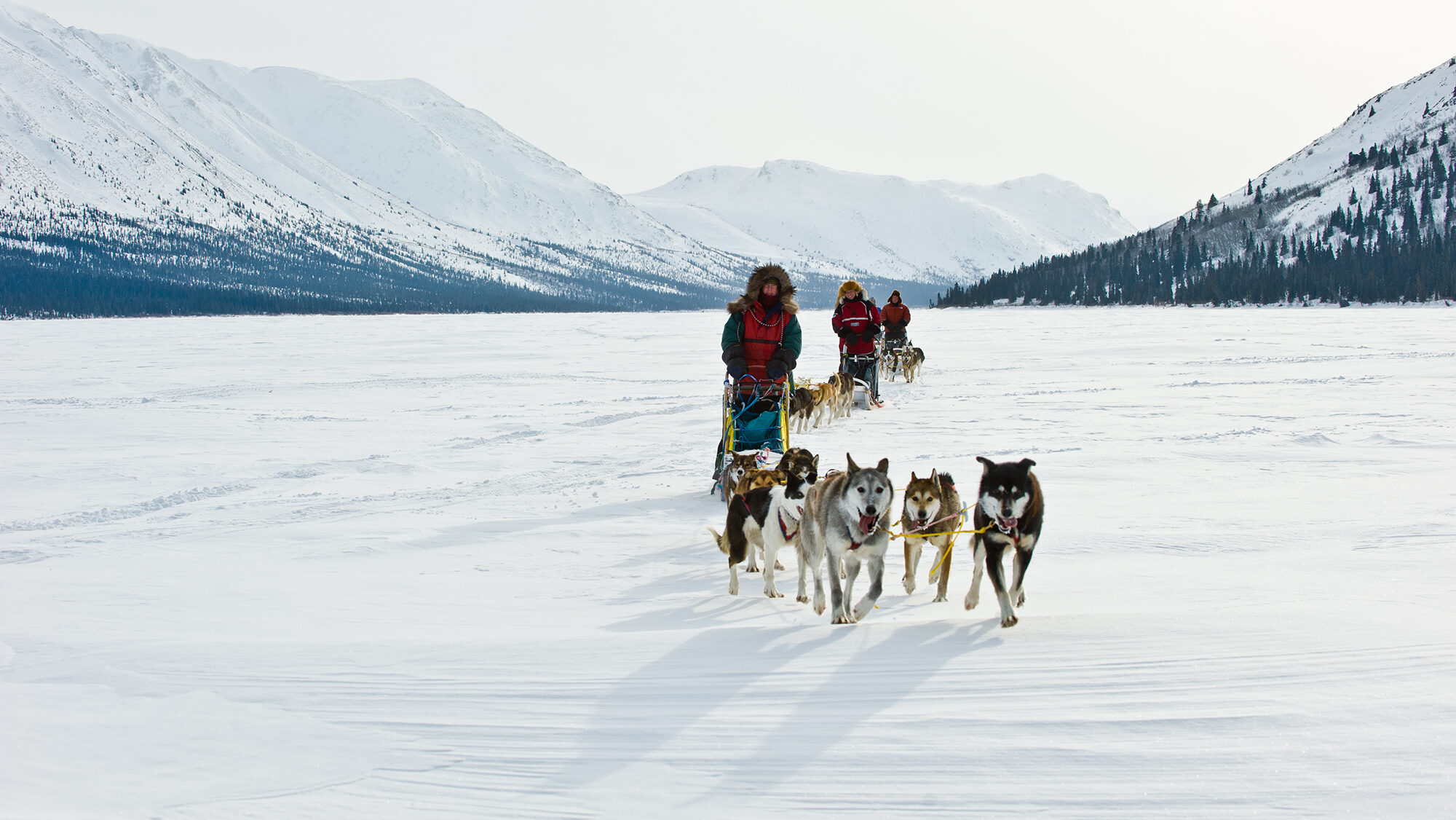
6. Photography Opportunities
The combination of pristine landscapes, dark skies, and intense auroral activity makes the Yukon a photographer’s paradise. Whether you’re a professional or an amateur, you’ll have the chance to capture once-in-a-lifetime images.
7. Sustainable Tourism
By choosing to visit the Yukon with a responsible tour operator like Mosaic Earth Travel, you’re supporting sustainable tourism practices that respect both the natural environment and the local communities. Learn more about our ethos and tour packages.
A Once-in-a-Lifetime Opportunity
If a winter holiday to Canada’s North is on your bucket list (or has just been added after reading this blog!), now is the perfect chance to start planning.
The 2024/2025 solar maximum presents a rare convergence of scientific phenomenon, natural wonder, and cultural significance. This peak in the sun’s 11-year cycle offers the opportunity to witness the Northern Lights at their most frequent and intense, and locations like the Yukon provide a prime viewing environment.
This celestial event reminds us of our place in the universe and the diverse ways humans have interpreted these cosmic connections throughout history. Whether viewed through the lens of scientific inquiry, cultural tradition, or simple wonder, the Northern Lights during this solar maximum promise to be an enriching experience that connects us to the universe and to each other in a truly unique way.
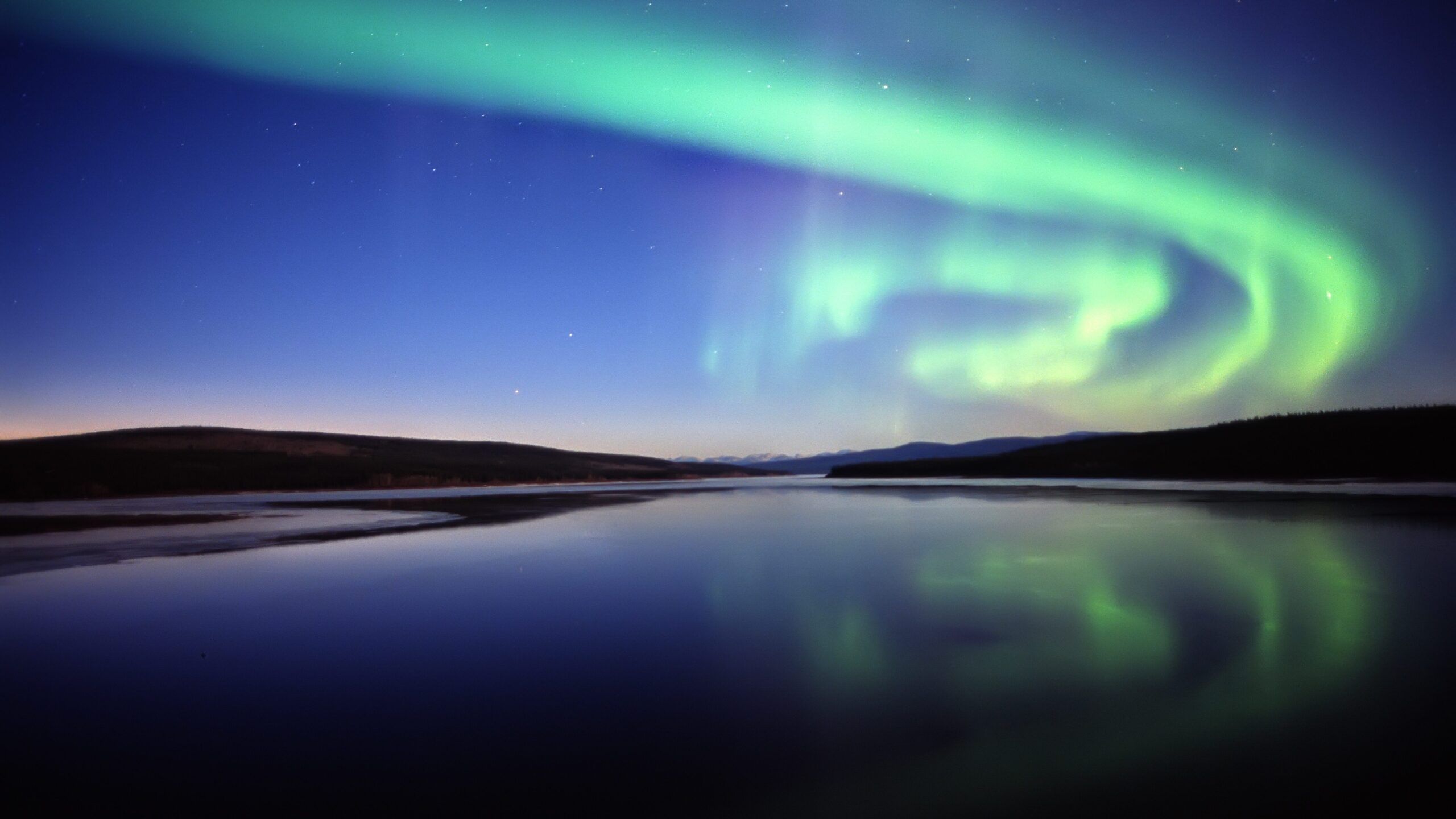
How to Plan Your Trip to the Yukon
For the best aurora viewing, we recommend visiting the Yukon either in late summer – mid/late August to mid-September, where you can also enjoy summer activities like hiking, biking, and canoeing while also witnessing the fall colours; Or late winter – February and March, with increasing daylight and temperatures to best enjoy all the outdoor activities.
The peak time for aurora is usually between about 10pm and 3am. Try to avoid planning a visit around the full moon, and make sure you get outside the city and away from ambient light to ensure better views. Keep an eye on the Aurora Forecast for up-to-date predictions.
Booking a tour with an expert guide or tour operator is recommended as many operators have private viewing sites with unobstructed views of the night sky.
Connecting with a local guide also brings expert insight into the region’s culture and history, while taking the stress out of driving and planning your own excursions.
As aurora sightings are never guaranteed, we recommend planning for at least 3 nights of viewing to maximize your chances.
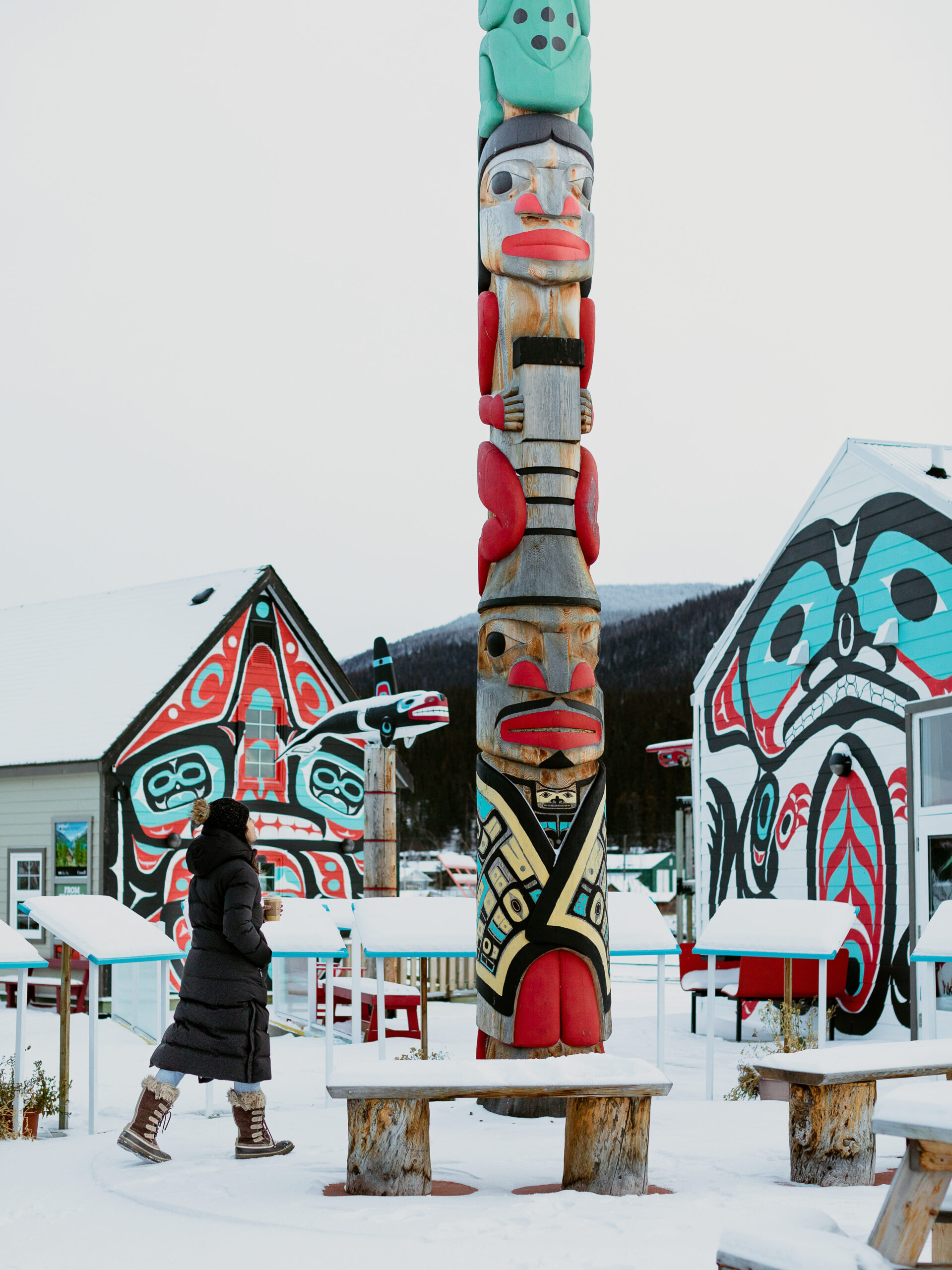
Mosaic Earth Travel offers customizable winter packages whether you’re looking for luxury & comfort, or a budget-friendly visit. Our carefully curated trips ensure that you will not only have the best chance of seeing the aurora but also gain a deeper understanding of this phenomenal natural light show and its significance to the people who call the Yukon home.
Join us in 2025! Connect with our team to learn more + book your spot: travel@mosaicearth.ca, Contact Us form, or call toll-free: +1 (778) 400-5299.
SOURCES:
Canadian Geographic: Fun Aurora Borealis Facts (link)
Canadian Space Agency: What Are Northern Lights (link)
Destination Canada: How to See The Northern Lights with an Indigenous Eye (link)
Discovering the Arctic: The Northern Lights (link)
Nature Canada: The Beautiful Northern Lights (link)

